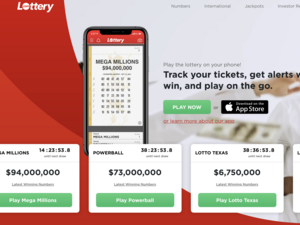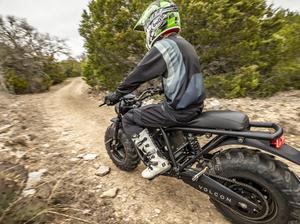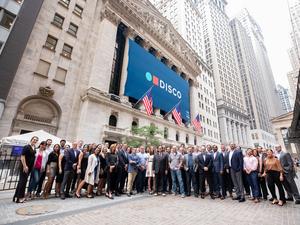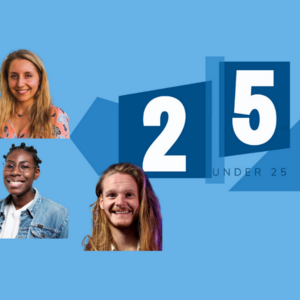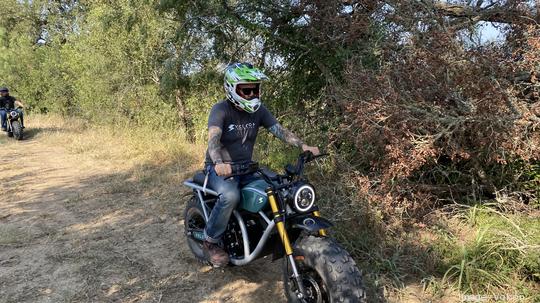
It's been more than a decade since I've driven a motorcycle. So, as I headed out to a ranch east of Austin to test ride one of Volcon's electric off-road dirt bikes, I had a bit of trepidation.
After strapping on a helmet and getting a quick rundown of how to put it in drive and use the brakes, I pushed off down a dirt trail. Riding slowly, I quickly realized that the bike's small size and ability to shift between speed modes — stroll, explore and sport — made it a lot more manageable than I expected.
Cruising along at about 15 mph, I was already starting to feel the need for speed. Shifting into explore mode, I brought it up to maybe 20 mph, about as fast as I was comfortable with on a relatively bumpy road near fencing.
It was a blast kicking up dust, and the bike didn't seem to strain under my larger-than-average body. Perhaps the only truly jarring moment was crossing a small drainage ditch, where I felt the limits of the suspension while still seated. That said, as an inexperienced rider, I only briefly tested sport mode — and didn't come close to seeing how it might handle corners and rough terrain at full speed.
While the Grunt's $7,995 list price puts it a bit outside of an impulse buy for many, I started to see how someone with easy access to trails might put it on their wish list. It's nearly silent. It's pretty accommodating for riders of most sizes and experience levels. And it's easy to imagine putting it to good use for exploring tough-to-reach places without scaring all the wildlife one might want to observe or hunt.
During my test ride in late August, I had no idea that Volcon Inc., a roughly one-year-old startup, was already gearing up for an IPO. But I got the lowdown in a followup conversation with Volcon CEO Jordan Davis last week.
How an emerging startup ended up on Nasdaq
Shortly after Volcon emerged from stealth and announced it had opened a temporary headquarters in Round Rock, the startup began raising money. In total, it landed $17.5 million, which included about $2.5 million secured in a WeFunder crowdfunding campaign.
That's a strong start, but not quite a traditional IPO trajectory.
But Davis said Volcon had been working toward an IPO even before he took over as CEO in September.
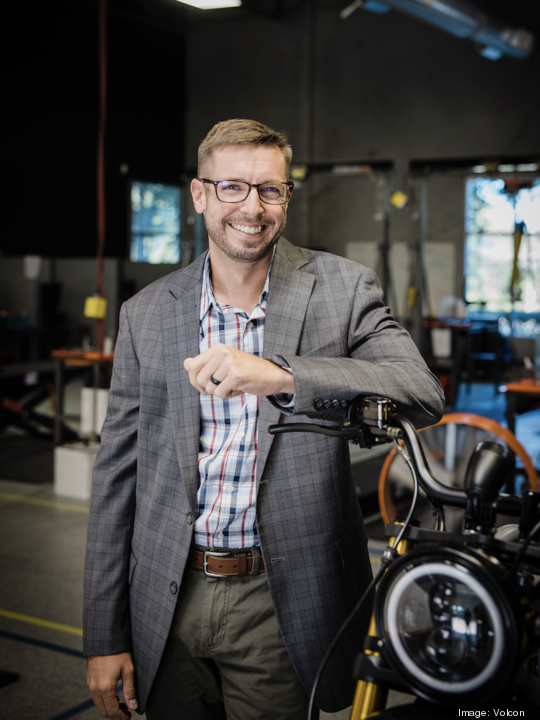
"I think a lot of that was predicated on the market's appetite for EV companies and emerging technologies companies, as we've seen over the last 12 to 18 months," Davis said. "And it's still there. The Street, as they say is, is still very interested in in EV offerings. I won't say that we took advantage of that, but we felt that it was the right time to offer up at the ground level a way for investors, both retail and institutional alike, to get in on the ground floor."
Davis acknowledged it may have felt untraditional, given the company's early-stage status.
"That brings with it a little bit of stigma about how far along we could possibly be, as a going concern," he said. "I think we look at it another way. How I look at it is that we are in month 12, going into month 13. We're shipping product to customers and to retailers ... high quality motorcycles are leaving the facility here. And you can't really say that about some of our competitors. ... I think one of the reasons why we were not afraid to go into public markets is because we've accomplished a big milestone for a startup, which is shipping to your first customers with what we believe is very high quality product."
Volcon's stock, which trades as "VLCN" on the Nasdaq, quickly shot up from its IPO pricing of $4.50 to $5.50 a share, reaching a peak of $15.50 in its first couple days on the market. The shares were trading around for around $9.40 apiece ahead of the Oct. 19 closing bell. To track the stock yourself, go here.
Volcon remained in a lock-up period during our interview, so Jordan couldn't comment on how employees and investors may have benefited from the IPO. But he said many of the company's 43 full-time employees have a stake in the company.
"It was a very legitimizing experience for a lot of people. When you're here you're in the grind day in and day out ... 10-12 hours a day. So it was very validating for a lot of people."
The company has had a few celebrations for its first shipments and other milestones. But it didn't waste much time celebrating, Davis said.
"We're pretty pragmatic, and we're ready keep launching new products and showing the markets, and showing our customers, what we can do rather than just telling them," he said. "For most of us, we look at it as a way to have brought in funding to move us to the next goal. So it's exciting, yes, but I think everyone realizes that the long term is where we're going to create a lot of value, and they have an eye on that."
As of early October, Volcon said it had reached $1.7 million in customer orders and up to $4.2 million in refundable reservations. And, while the company continues to build bikes at its production facility in Round Rock, it's already looking toward the launch of its four-wheeled vehicles.
Davis declined to discuss revenue, and the company, to date, hasn't shown any revenue figures in federal filings. He said the company may provide more guidance once it develops its dealership relationships more.
That powersports lineup will feature an electric side-by-side utility terrain vehicles, called the Stag. Volcon recently announced it's teaming up with Detroit-based Martin Technologies to provide chassis and other components for the vehicle, which is coming next year ahead of its planned launch of the Beast, its largest planned 4x4 that will roll out in 2023.
Volcon has been impacted by widespread supply chain issues, forcing it to find other avenues for some electrical components, Davis said, noting most other vehicle companies are feeling the same pinch.
"There hasn't been one thing that stands out as a major red flag issue," he said, noting prices have also gone up in some categories. "We haven't had a full-on stop production environment due to supply chain. They've been able to source product, source parts and get them in to keep to production moving. Not as fast as we'd like, but it's moving."
While the company continues hiring, Davis said he and his colleagues takes a relatively cautious approach in using money generated by the IPO.
"I've been in environments where you get a little bit of liquidity, a little cash flow, and all of a sudden it's like 'Let's hire everybody and do everything we ever wanted to do.' And 18 to 24 months later, it's come full circle," he said. "I've also been in environments and with leadership teams who understood that doing the boring stuff really, really well, and being pragmatic with your scale and looking to the long term, generally provides better profitability and better growth opportunity for the company."
